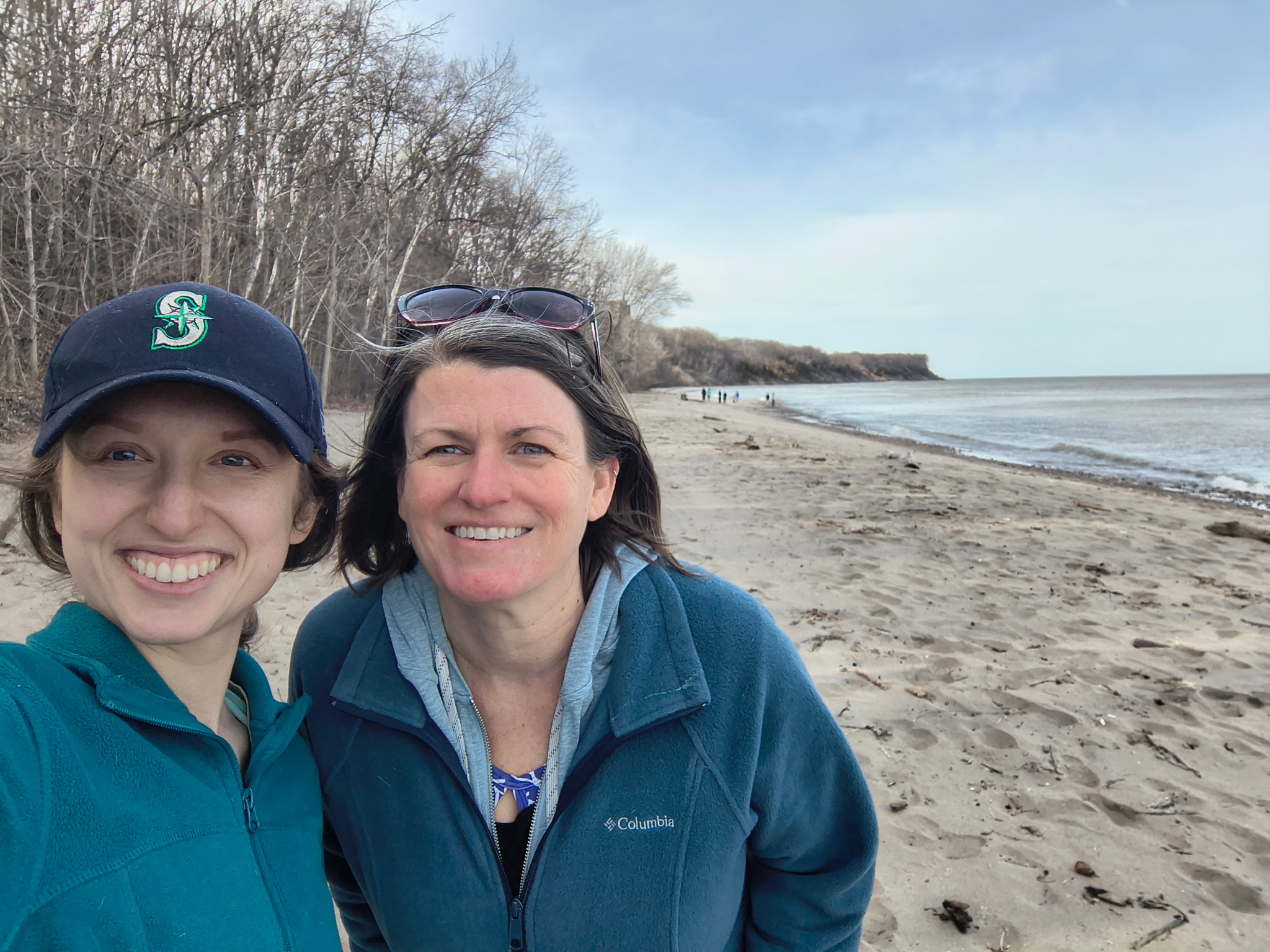Friday night fish fries are a Wisconsin staple. For many diners, that means walleye, prized for its delicate texture and mild flavor. But what many don’t know is that the majority of walleye found in restaurants or at supermarket fish counters is wild-caught in Canada. The iconic Wisconsin fish is perhaps not so local after all.
A Sea Grant-funded research project headed by University of Wisconsin-Stevens Point professor Chris Hartleb may change that. Hartleb and his collaborators are doing work that holds promise for Wisconsin fish farmers to be able to raise walleye and saugeye (a hybrid of walleye and sauger) in indoor aquaculture systems.
Said Hartleb, “Walleye are popular as both a game and food fish in the Upper Midwest, but there are no fish farms raising walleye as food fish in Wisconsin. There’s no reason we shouldn’t be raising walleye and saugeye.”
Hartleb is working with Wisconsin Sea Grant’s aquaculture outreach specialist, Emma Wiermaa, and Greg Fisher and Kendall Holmes of UW-Stevens Point’s Northern Aquaculture Demonstration Facility (NADF) in Bayfield. Hartleb, a professor of fisheries biology, also directs NADF.
The team is focusing on the role of commercially prepared diets in raising healthy walleye and saugeye fry that are well-suited to the indoor aquaculture environment. Saugeye taste similar to walleye but thrive better in tank aquaculture systems.
This new research builds on existing, multi-year work by Hartleb and his team to help Wisconsin aquaculturists understand the ins and outs of raising walleye from early stages when they are known as fry.
Walleye and saugeye, said Hartleb, are “notoriously finicky eaters early in their lives,” when they are on starter diets. “We’re surveying up to five different types of commercial food, to see how well these small walleye fry do on the first food they’re given.”
They’ll also consider a special feed that is tailored just for the needs of walleye and saugeye. That diet is currently being developed by fish nutritionist Jon Amberg of the Upper Midwest Environmental Sciences Center in La Crosse, Wis., a facility of the United States Geological Survey.
The current project will run from 2018-20. The first year will focus on testing and comparing five commercially available diets. Year two will zero in on the two best-performing commercial diets, plus the feed made specifically for walleye/saugeye.
Hartleb and his collaborators consider this work part of a larger endeavor to come up with an instruction manual for Wisconsin fish farmers interested in raising walleye. In the future, they’d like to look at the issue of out-of-season spawning. “Fish farmers want a continuous crop year-round, not one that’s produced one time a year,” said Hartleb.
The Midwest consumes over 1 billion pounds of seafood products per year but less than 4 percent comes from aquaculture operations in the region. Advancing sustainable, domestic aquaculture is a key goal of the national Sea Grant program.
You can find additional information about this research on the NADF site.
Questions may be directed to Dr. Hartleb at chartleb@uwsp.edu.





